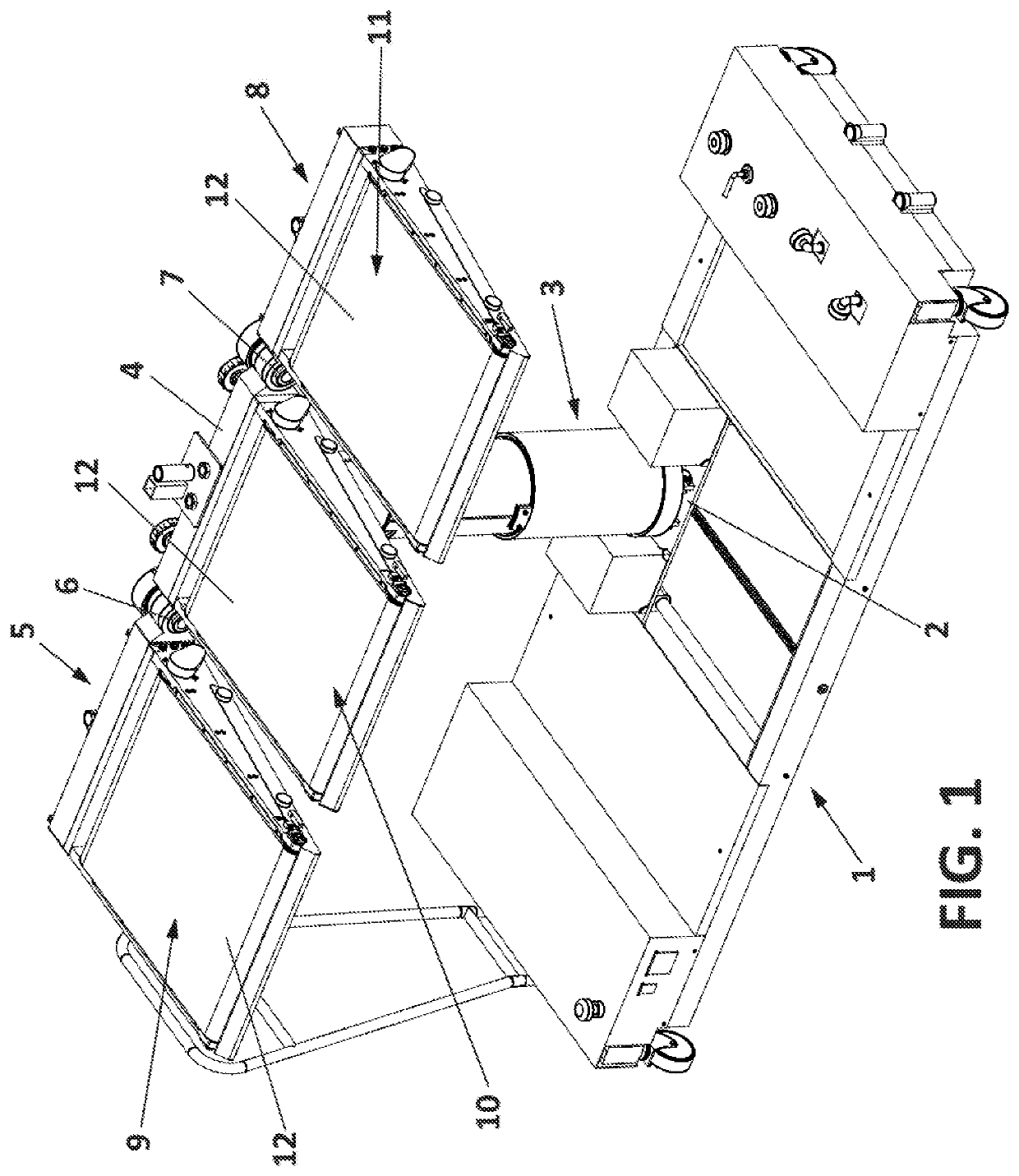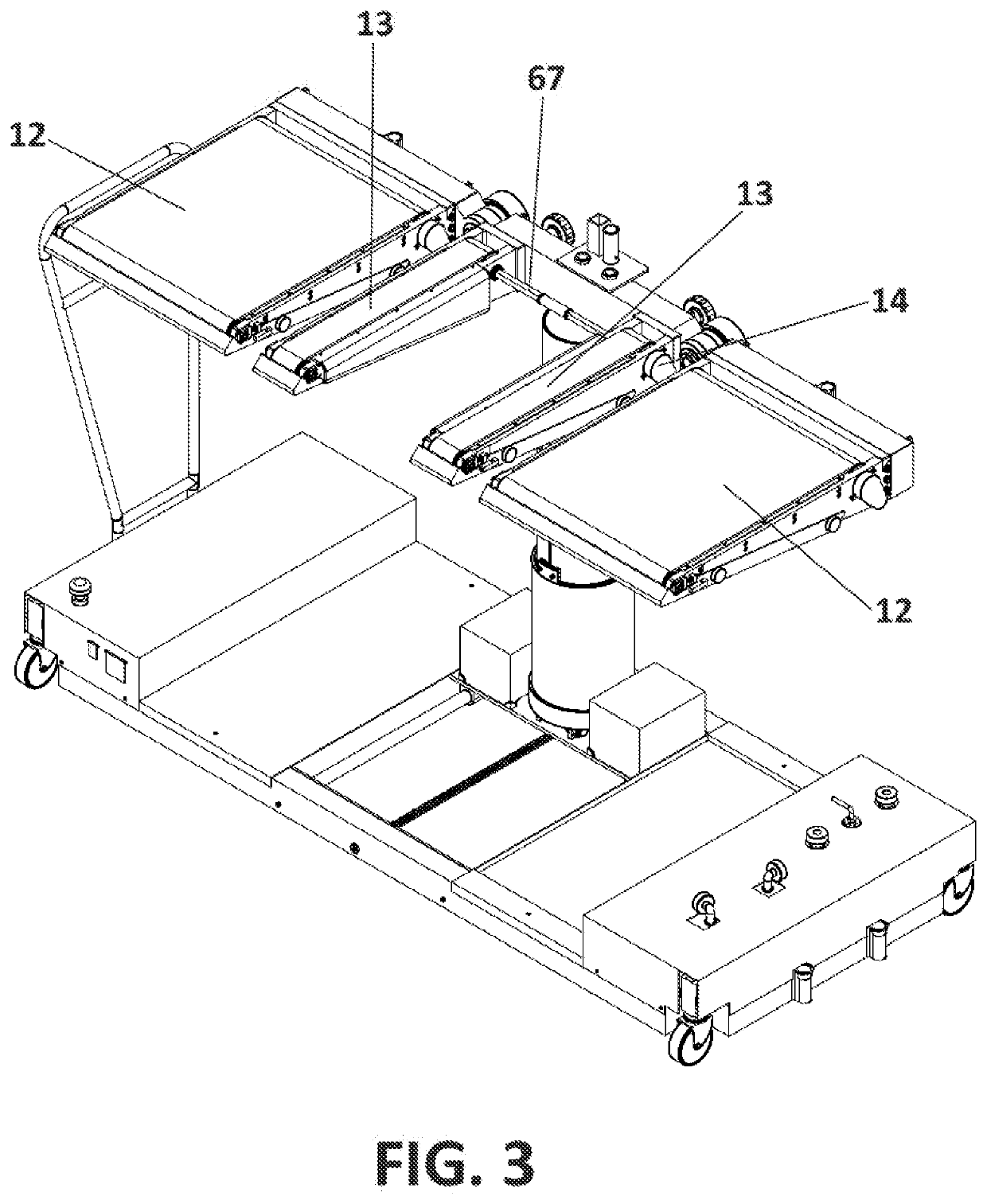Stretcher for people with reduced mobility
a technology for people with reduced mobility and stretchers, applied in medical science, hospital equipment, nursing beds, etc., can solve the problem of involuntarily causing one or two stitches to burs
- Summary
- Abstract
- Description
- Claims
- Application Information
AI Technical Summary
Benefits of technology
Problems solved by technology
Method used
Image
Examples
Embodiment Construction
[0007]The present invention relates to a stretcher for people with reduced mobility that provides a satisfactory solution to the previously expounded problems, being endowed with several degrees of freedom that facilitate a multitude of operations, particularly transferring the patient from the stretcher to a wheelchair or to a bed automatically, distributing his or her weight and with barely any movement, without need for the nurses to intervene and, inter alia, allowing the patient to satisfy his or her physiological evacuation needs directly through the stretcher itself.
[0008]The stretcher basically comprises a base or frame, a column that is extended or retracted in height with respect to the frame, which has an upper end and a lower end, a fixed central support mounted on the upper end of the column, a front support tilting with respect to a fixed central support and a rear support tilting with respect to the central support. Likewise, it has front, central and rear modules tha...
PUM
 Login to View More
Login to View More Abstract
Description
Claims
Application Information
 Login to View More
Login to View More - R&D
- Intellectual Property
- Life Sciences
- Materials
- Tech Scout
- Unparalleled Data Quality
- Higher Quality Content
- 60% Fewer Hallucinations
Browse by: Latest US Patents, China's latest patents, Technical Efficacy Thesaurus, Application Domain, Technology Topic, Popular Technical Reports.
© 2025 PatSnap. All rights reserved.Legal|Privacy policy|Modern Slavery Act Transparency Statement|Sitemap|About US| Contact US: help@patsnap.com



